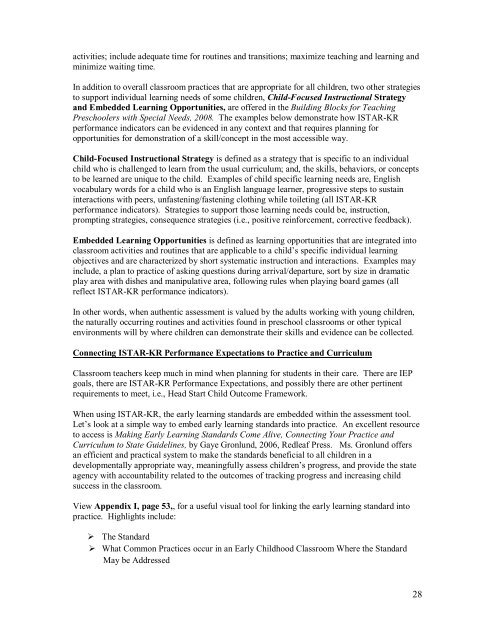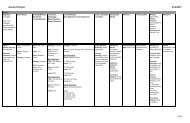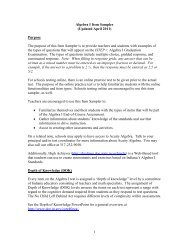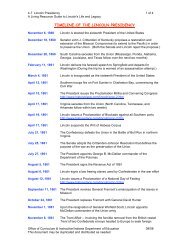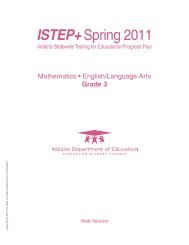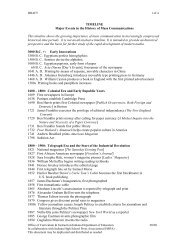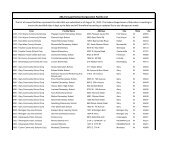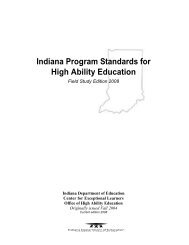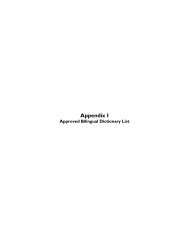Early Childhood ISTAR-KR Assessment Handbook - Indiana ...
Early Childhood ISTAR-KR Assessment Handbook - Indiana ...
Early Childhood ISTAR-KR Assessment Handbook - Indiana ...
Create successful ePaper yourself
Turn your PDF publications into a flip-book with our unique Google optimized e-Paper software.
activities; include adequate time for routines and transitions; maximize teaching and learning and<br />
minimize waiting time.<br />
In addition to overall classroom practices that are appropriate for all children, two other strategies<br />
to support individual learning needs of some children, Child-Focused Instructional Strategy<br />
and Embedded Learning Opportunities, are offered in the Building Blocks for Teaching<br />
Preschoolers with Special Needs, 2008. The examples below demonstrate how <strong>ISTAR</strong>-<strong>KR</strong><br />
performance indicators can be evidenced in any context and that requires planning for<br />
opportunities for demonstration of a skill/concept in the most accessible way.<br />
Child-Focused Instructional Strategy is defined as a strategy that is specific to an individual<br />
child who is challenged to learn from the usual curriculum; and, the skills, behaviors, or concepts<br />
to be learned are unique to the child. Examples of child specific learning needs are, English<br />
vocabulary words for a child who is an English language learner, progressive steps to sustain<br />
interactions with peers, unfastening/fastening clothing while toileting (all <strong>ISTAR</strong>-<strong>KR</strong><br />
performance indicators). Strategies to support those learning needs could be, instruction,<br />
prompting strategies, consequence strategies (i.e., positive reinforcement, corrective feedback).<br />
Embedded Learning Opportunities is defined as learning opportunities that are integrated into<br />
classroom activities and routines that are applicable to a child’s specific individual learning<br />
objectives and are characterized by short systematic instruction and interactions. Examples may<br />
include, a plan to practice of asking questions during arrival/departure, sort by size in dramatic<br />
play area with dishes and manipulative area, following rules when playing board games (all<br />
reflect <strong>ISTAR</strong>-<strong>KR</strong> performance indicators).<br />
In other words, when authentic assessment is valued by the adults working with young children,<br />
the naturally occurring routines and activities found in preschool classrooms or other typical<br />
environments will by where children can demonstrate their skills and evidence can be collected.<br />
Connecting <strong>ISTAR</strong>-<strong>KR</strong> Performance Expectations to Practice and Curriculum<br />
Classroom teachers keep much in mind when planning for students in their care. There are IEP<br />
goals, there are <strong>ISTAR</strong>-<strong>KR</strong> Performance Expectations, and possibly there are other pertinent<br />
requirements to meet, i.e., Head Start Child Outcome Framework.<br />
When using <strong>ISTAR</strong>-<strong>KR</strong>, the early learning standards are embedded within the assessment tool.<br />
Let’s look at a simple way to embed early learning standards into practice. An excellent resource<br />
to access is Making <strong>Early</strong> Learning Standards Come Alive, Connecting Your Practice and<br />
Curriculum to State Guidelines, by Gaye Gronlund, 2006, Redleaf Press. Ms. Gronlund offers<br />
an efficient and practical system to make the standards beneficial to all children in a<br />
developmentally appropriate way, meaningfully assess children’s progress, and provide the state<br />
agency with accountability related to the outcomes of tracking progress and increasing child<br />
success in the classroom.<br />
View Appendix I, page 53,, for a useful visual tool for linking the early learning standard into<br />
practice. Highlights include:<br />
� The Standard<br />
� What Common Practices occur in an <strong>Early</strong> <strong>Childhood</strong> Classroom Where the Standard<br />
May be Addressed<br />
28


